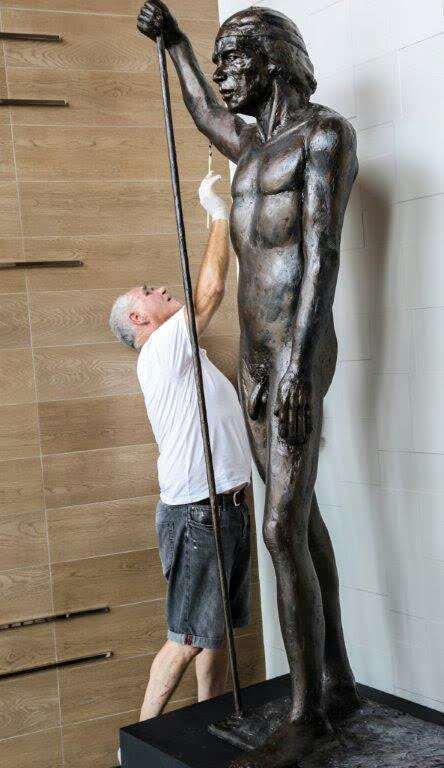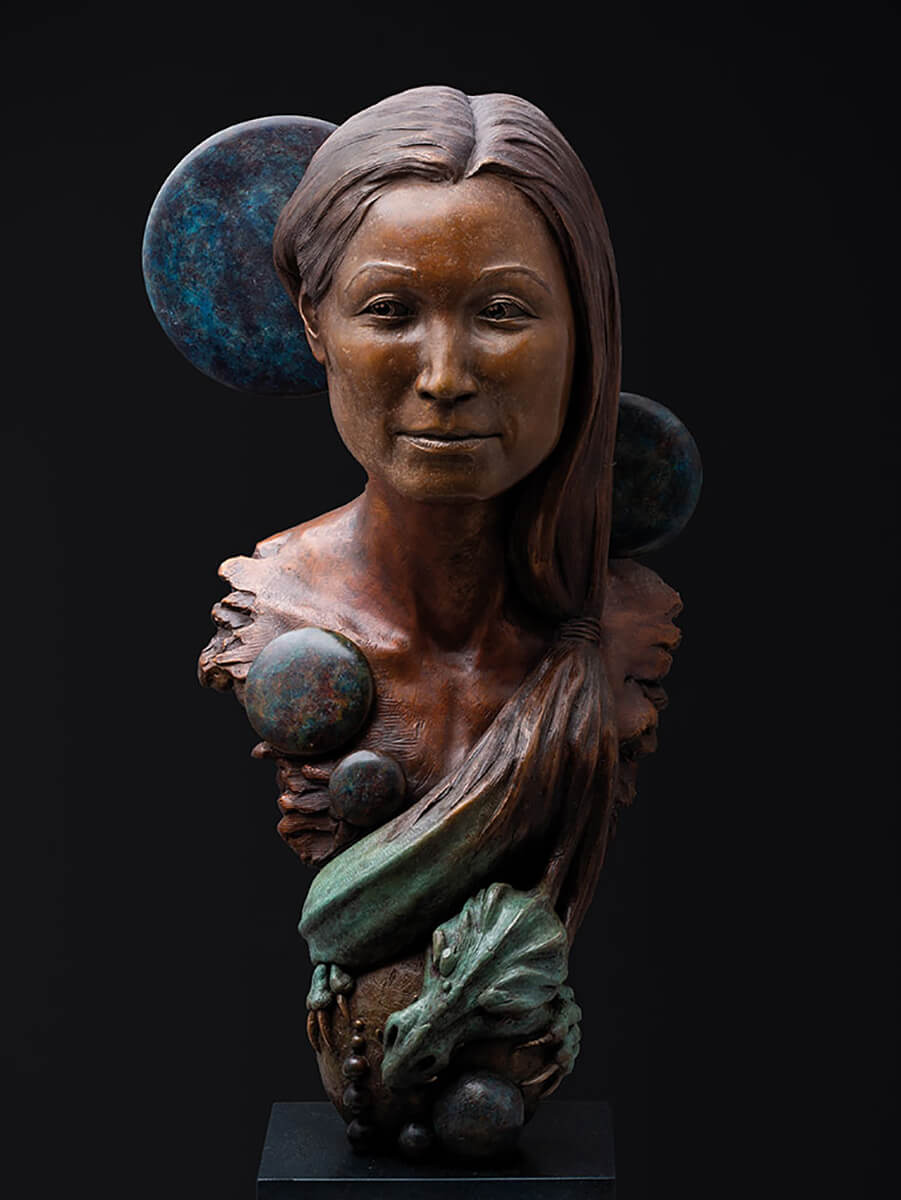The Impact of Nature in Sculpture Art
The impact of nature in sculpture art is a topic that has captivated artists throughout background. From old human beings to modern artists, the environment has actually functioned as a profound resource of ideas. This influence appears in the organic forms and forms that are often located in sculpture, resembling the contours and contours of nature. Carvers additionally check out structure and materials in their job, looking for to recreate the tactile qualities of the all-natural world. Significance of all-natural components is one more method which nature affects sculpture, as artists imbue their creations with the definition and associations intrinsic in these aspects. The atmosphere itself, with its landscapes, flora, and fauna, is typically reflected in sculptures, supplying a link to the world around us. Inevitably, sculpture art has the power to catch the transience of nature, cold a moment in time and allowing us to value its beauty in eternity.
Organic Forms and types
Organic types and forms, influenced by the harmonious structures and elaborate patterns discovered in nature, play a critical role in the realm of sculpture art. Artists have actually long been mesmerized by the charm and complexity of the natural globe, discovering motivation in the graceful contours of a seashell, the fragile petals of a blossom, or the turning branches of a tree. By mimicing and abstracting these natural types, artists have the ability to produce sculptures that evoke a feeling of consistency and balance.
Among the factors organic kinds and shapes are so prevalent in sculpture art is their capacity to get in touch with viewers on a deep psychological level. The all-natural world knows to all of us, and when we see these forms stood for in art, it generates a sense of comfort and acknowledgment. It reminds us of our location in the grand scheme of points and allows us to attach with something above ourselves.
Furthermore, natural forms and forms in sculpture art frequently personify a sense of activity and energy. The streaming lines and dynamic structures mimic the consistent motion and development found in nature. This produces a feeling of vitality and brings sculptures to life, making them look like if they could continue to transform and evolve prior to our eyes.
Appearance and Material Expedition
A substantial element of sculpture art affected naturally is the exploration of structure and products through making use of numerous techniques and mediums. Musicians often draw ideas from the diverse textures discovered in the all-natural globe, such as the rough bark of a tree, the smooth surface of a stone, or the detailed patterns on a leaf. By integrating these structures right into their job, sculptors can produce a tactile experience for viewers, inviting them to engage with the art work on a sensory level.
Appearance can be accomplished in sculpture via a selection of approaches. Some musicians pick to sculpt or shape directly into the chosen product, developing a three-dimensional surface area that simulates the structures discovered in nature - Robert C Hitchcock Sculptor.
Product expedition is also a significant component of sculpture art affected naturally. Musicians may venture into uncharted area, looking for out brand-new materials that evoke the essence of the all-natural globe. They may incorporate natural aspects like branches, leaves, or even soil into their sculptures, blurring the limits in between art and the setting. By pressing the boundaries of conventional materials and techniques, carvers can develop aesthetically sensational and conceptually abundant works that celebrate the beauty and diversity of nature.
Significance of Natural Aspects
The consolidation of all-natural elements in sculpture art includes a layer of significance and deepness to the art work. By making use of products found in nature, carvers have the ability to imbue their creations with significance that resonates with visitors on a profound degree. Natural environments such as timber, stone, and plants have been made use of throughout history to share various symbolic messages.
Timber, as an example, usually stands for development, durability, and stamina. Sculptures crafted from this material can evoke a sense of connection to the earth and the cycles of life. Rock, on the various other hand, is frequently connected with durability and endurance. Sculptures sculpted from stone can symbolize the timeless nature of certain concepts or ideas.
Plants and flowers are additionally often included right into sculpture art, representing themes of renewal, growth, and appeal. The fragile petals and vibrant shades of blossoms can evoke sensations of pleasure, while the intertwining branches of plants can symbolize interconnectedness and unity.
Along with these all-natural materials, carvers might additionally utilize natural environments such as water, fire, or wind to even more improve the symbolic message of their art work. These components can represent the transformative power of nature, the passage of time, or the forces that shape our world.

Representations of the Environment
Representations of the Setting can be seen in sculpture art through the unification of natural environments and the representation of ecological styles. Artists frequently attract ideas from the environment, utilizing products such as timber, rock, and even recycled materials to develop their art work. By using these natural aspects, they not just admire the environment however additionally create a stronger connection between the art work and its environments.
Along with the products used, sculpture art also shows the atmosphere via the representation of eco-friendly themes. Many carvers select to illustrate pets, plants, or landscapes in their job, highlighting the elegance and delicacy of the environment. These sculptures function as reminders of the relevance of protecting our atmosphere and the demand for sustainable techniques.

Furthermore, environmental sculptures typically intend to increase awareness concerning pressing eco-friendly concerns. They function as graphes of the influence of human activities on the atmosphere, such as logging, air pollution, or environment modification. By depicting these concerns in their artwork, sculptors wish to motivate viewers to do something about it and end up being more conscious of their very own environmental footprint.
Capturing the Transience of Nature
Sculpture musicians better discover the influence of nature by skillfully catching next the ephemeral and ever-changing aspects of the environment. With their creativity, these artists aim to portray the fleeting appeal and transience of nature, stimulating a feeling of wonder and consideration in customers.
One way in which sculpture artists catch the transience of nature is by making use of products that are themselves based on degeneration and adjustment. As an example, artists may choose to deal with natural products such as leaves, blossoms, or wood, which naturally wear away in time. This intentional option highlights the brevity of nature and reminds us of the unpreventable cycle of life and death.
Additionally, sculpture musicians often employ strategies that produce a feeling of activity and fluidness in their work. By integrating streaming lines and dynamic kinds, they convey the ever-changing nature of the natural world. This can be seen in sculptures inspired by wind, water, or the growth of plants, where the artist looks for to catch the significance of continuous movement and change.
Moreover, some artists select to create site-specific or temporary setups that engage with the environment. These ephemeral sculptures, made from materials such as ice, light, or sand, are deliberately created to progressively vanish or alter gradually. By welcoming the short-term nature of their developments, musicians invite audiences to review the fleeting charm of the natural world and the impermanence of human presence.

Verdict
In conclusion, nature has a profound influence on sculpture art. With using natural kinds and forms, musicians have the ability to stimulate a feeling of all-natural beauty and harmony. Texture and material exploration even more improve the connection to nature, as artists typically integrate all-natural products into their sculptures. Meaning of natural environments includes depth and implying to the artwork, while reflections of the environment capture the essence of nature. Ultimately, sculpture art records the transience of nature and commemorates its eternal influence.
Significance of all-natural components is another method in which nature affects sculpture, as artists imbue their developments with the definition and associations intrinsic in these components.A considerable element of sculpture art influenced by nature is the exploration of appearance and materials through the usage of numerous techniques and mediums (Contemporary Sculptures).Product exploration is also a considerable component of sculpture art affected by nature.One means in which sculpture artists capture the transience of nature is by using materials that are themselves subject to degeneration and adjustment. Appearance and product exploration further enhance the connection to nature, as artists commonly include all-natural products right into their sculptures